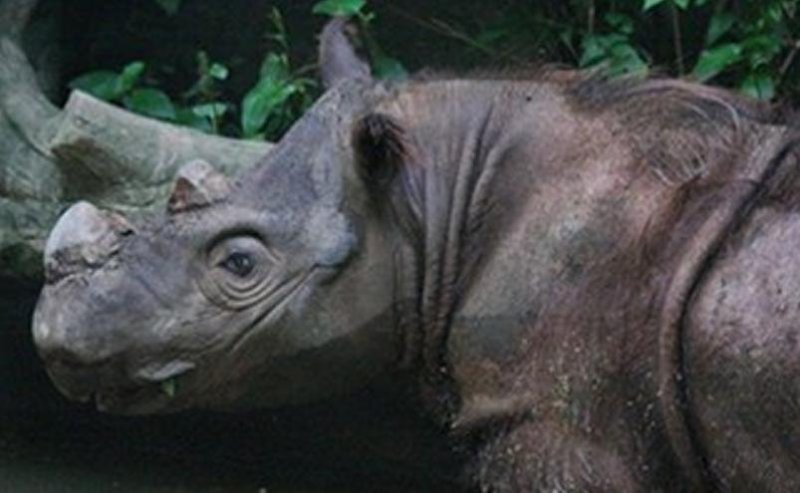Harapan, a six-year-old Sumatran rhino at Cincinnati Zoo. (Credit: Cincinnati Zoo)
At a recent crisis summit in Singapore, conservationists concluded that as few as 100 Sumatran rhinos remain in their native Southeast Asia -- an estimated decline of up to 90 percent since the 1980s.
Plans to save the critically endangered species include breeding two siblings, Harapan and Suci, at the Cincinnati Zoo.
Critics say captive breeding and inbreeding can do more harm than good, resulting in offspring unable to survive in the wild.
"No one wants to breed siblings, it is something we strive to avoid, but when a species drops below 100 individuals, producing more offspring as quickly as possible trumps concerns about genetic diversity," said Dr. Terri Roth, Vice President of Conservation and Science and Director of CREW at the Cincinnati Zoo.
"We are down to the last male and female Sumatran rhino on the continent, and I am not willing to sit idle and watch the last of a species go extinct," Roth said, adding that the siblings' parents were themselves genetically diverse.
The Cincinnati Zoo is a pioneer in captive rhino breeding, producing three since 2001. Harapan, a six-year-old male born at the zoo, has been returned home from the Los Angeles Zoo to mate with his 9-year-old sister Suci.
The parents of the three rhinos born in Cincinnati have died, but their eldest offspring, 11-year-old Andalas, was moved to Indonesia where he mated with a wild-born rhino. While efforts to breed him with other females continue, his sperm has been banked.
All rhino species are dwindling, but the two-horned, hairy Sumatran rhino is the most endangered. Descended from Ice Age woolly rhinos, they are one of the least recognizable species, and also one of the most harmless.
Roth says there is the Sumatran rhino is a non-threatening species to humans, and that they don't harm crops.
“The Sumatran rhino is a forest dwelling species and therefore also plays an integral role in maintaining the forest ecosystem," Roth said. The browsing animal eats brush and saplings, clearing paths for smaller animals, dispersing seeds, and making room for young trees to grow.















